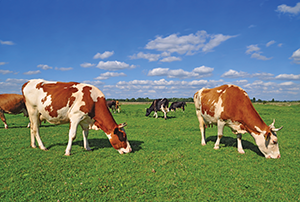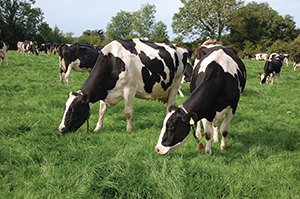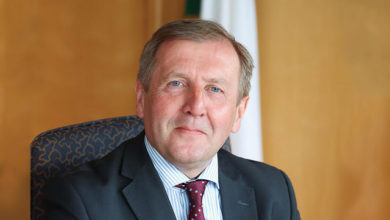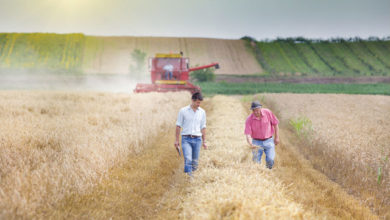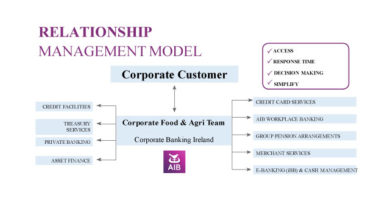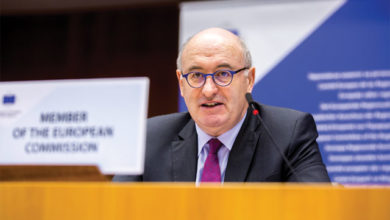Dairy a key growth driver for Ireland
eolas looks at how the end of EU milk quotas will impact the dairy sector in Ireland.
Forget the dire predictions that 2015 will be a challenging year for the Irish dairy sector. The real game changer for the milk industry during the months ahead is the fact that EU dairy quotas are in their rear view mirrors. But a very fundamental question arising from this development: Is a production free for all the scenario that will deliver profitable, long-term, growth opportunities for Irish dairy farmers?
Ask any milk producer the fundamental question: do you want to produce more milk from your cows? And the resounding answer coming back every time will be: “Yes, provided we have a level playing field to operate on.”
The reality is that it is in every dairy farmer’s DNA to want to find ways of getting more milk from cows. Quotas have stymied this aspiration in the Republic of Ireland for the past 30 years. So it is only natural to conclude that the Irish dairy sector will now want expand its output quite significantly, given that the production shackles are about to come off.
The ultra-conservative Irish government believes that milk output will expand by 50 per cent over the next five years. The projections have been laid out for all to see courtesy of the much discussed Harvest 2020 report. And if one is to believe the latest perspectives from Agriculture Minister Simon Coveney, the potential for the milk industry to expand again beyond 2020 is just as significant.
World markets
There has been wall to wall coverage given by the farming and business media over recent times as to the scale of the downturn that will impact on world dairy markets during 2015. Everyone within the industry agrees that the run of recent Fonterra action results in New Zealand has proven disappointing with international markets weakening significantly as a consequence. However, those backing the deregulation of the milk sector and the ending of quotas view Moscow’s recent decision to extend its EU food ban as an equally important factor in lowering Irish farmgate milk returns. These same people quickly point out that the steps taken by Russia are a direct response to political decisions taken in Brussels.
There is also universal agreement that the medium to long term trends for dairy are extremely promising. All the predictions point to the unfolding scenario of the global dairy industry not being able to meet the growth in the demand for milk products. In addition, the recent weakening of the euro against most of the world’s other currencies will act to make Irish dairy exports more competitive, thereby boosting the potential for processers to pay improved farmgate milk prices during the period ahead.
A further boost for the Irish milk industry is recognised in the enhanced commitment of farmers to improve production efficiency levels within their businesses. On the back of the excellent work carried out by Teagasc, the agriculture and food development authority, the vast majority of milk producers now realise the importance of getting their dry cow, breeding cow and heifer rearing practises correct. These are all critical determinants of farm-based efficiency and productivity levels.
But not everyone within the Irish dairy industry believes that the ending of quotas is the panacea for sustainable growth, Irish Creamery Milk Suppliers Association (ICMSA) President John Comer being one of them.
He holds strongly to the view that the principle of introducing some form of strategic volumetric control mechanism with the EU dairy sector in the post quota era remains worthy of further consideration.
“This is a feasible option, given that the EU Milk Observatory is now in place,” he says.
“The first step in the process would be to give the observatory some form of statutory basis. ICMSA was the first lobby group to call for the establishment of the observatory 10 months ago. But the new organisation must be given teeth in order to allow it to function properly.
“Fundamentally, we need Europe to make decisions now that will prevent a catastrophe within the Irish milk sector during the first half of 2015, and possibly beyond,” Comer comments.
“There are approximately 1,000 politicians and their advisors within the EU, all with a role to play in developing strategic support policies for the dairy sector.”
Support mechanisms
The ICMSA representative believes that strengthening dairy intervention prices is the key support weapon in the EU armoury.
“Teagasc analysis confirms that the breakeven cost of production price for milk is 28.5 cent per litre,” he added.
“This figure takes no account of labour costs. So it makes obvious sense that the intervention prices for dairy products should be restructured to take account of this reality.”
But Comer points out that the other support tools available to the EU Commission – aids to private storage and export refunds – must be managed with a degree of sensitivity.
“I do not believe in the principle of simply dumping our problems on other regions of the world. Above all else, we want to ensure that international dairy markets are recovering, across the board, as Irish dairy output increases throughout 2015.”
Dairy farmers must take a considered approach to expanding their businesses in the wake of milk quotas ending, according to Dairy Ireland chairman David Murphy.
“The termination of quotas is not a silver bullet in terms of delivering unending good times for the milk sector,” he says.
“Challenges still lie ahead, market volatility being one of them. However, the big advantage to be gained from milk quotas ending is the tremendous flexibility which milk producers now have to respond positively when dairy markets are strengthening. A case in point was last year: market prices hardened significantly during the first half of 2014, yet many Irish dairy farmers were hampered from benefitting fully from this opportunity because of quotas.”
Murphy went on to point out that a key challenge now confronting dairy farmers is that of ensuring the sustainability of their current businesses.
“Producers must act to have their existing farms running as efficiently as possible before looking at possible growth opportunities down the road.
“I believe that it should be feasible for producers to expand milk output by up to 15 per cent, simply on the back of getting more from their existing herds. For the most part, this will be achieved by milking cows longer into the back end. Up to now many farmers were drying cows off prematurely because of quota limitations.”
Murphy believes that dairy processers must also play their part in delivering a sustainable price for milk producers.
“I welcome the almost €0.75 billion that has been invested in new dairy processing capacity. Obviously we must, as an industry, ensure that the optimal level of payback is generated on the back of this commitment.
“However, we still have 20 different processing milk businesses in Ireland. Surely this figure could be reduced significantly. We need scale of operation to allow us compete with the likes of Arla and Fonterra on world dairy markets.”
The County Waterford man is firmly of the view that the coming years could be marked by a significant increase in EU milk output.
“New Zealand has reached its limit, from a milk production perspective,” he said.
“However, there is no doubting the potential of the United States to significantly increase milk output on the back of cheap grain and energy prices.”

